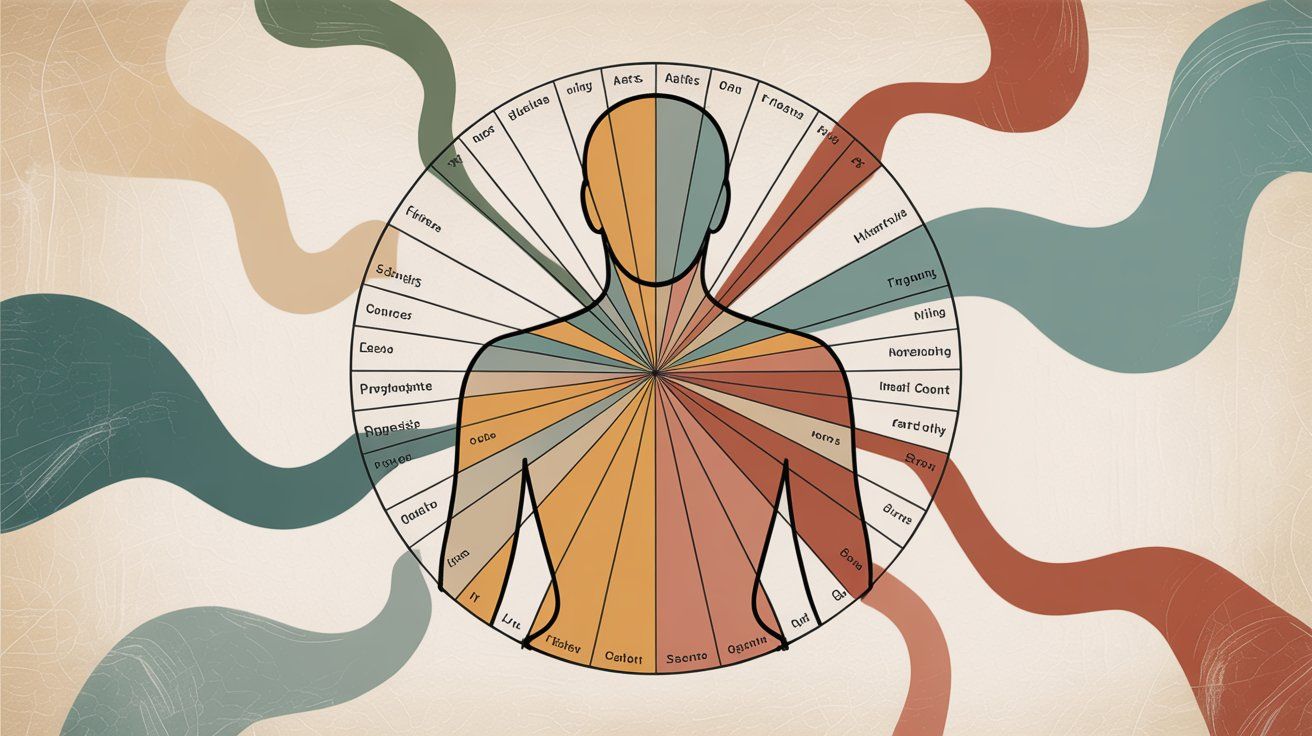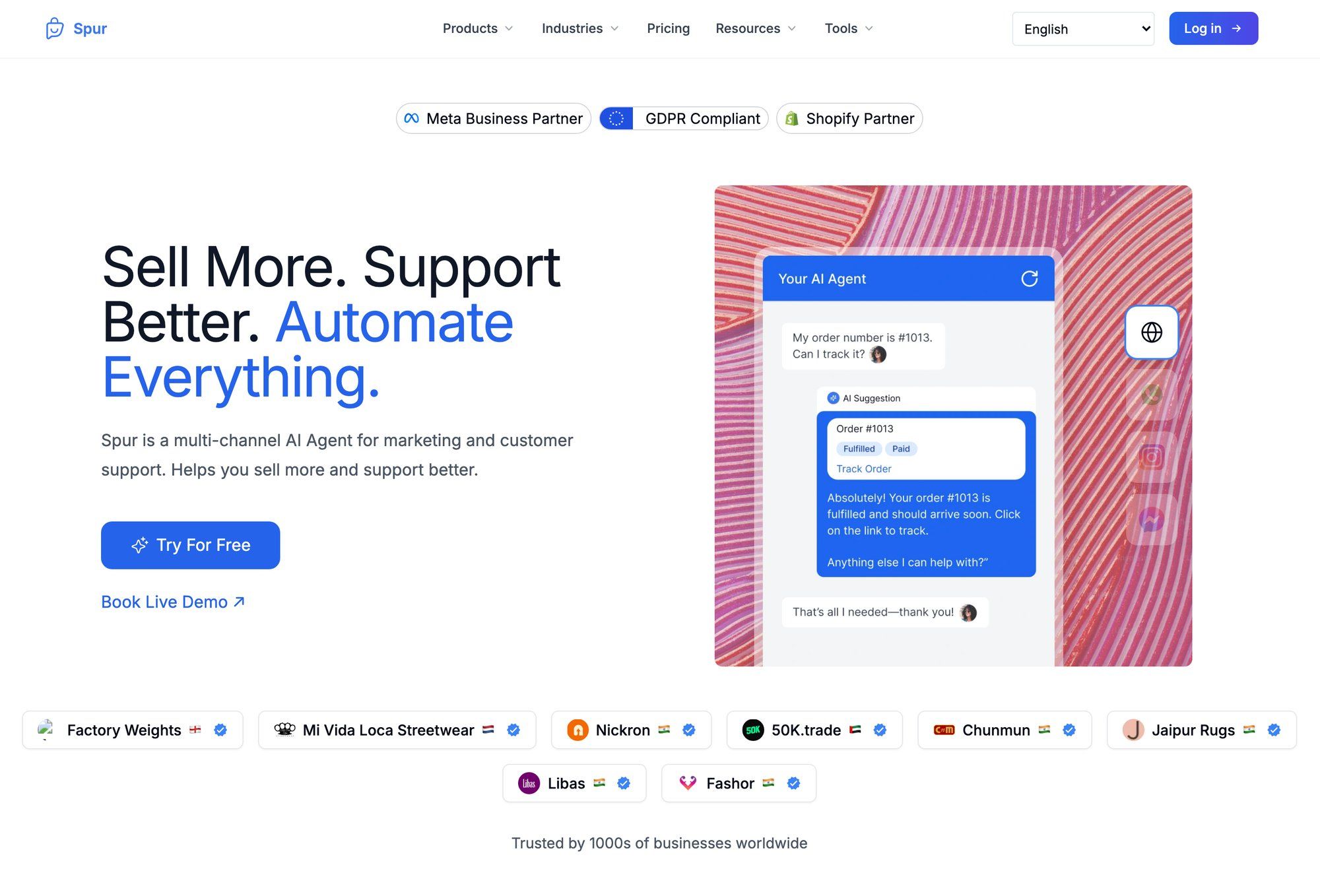
Psychographic Segmentation: The Complete Guide (2025)
Discuss with AI
Get instant insights and ask questions about this topic with AI assistants.
💡 Pro tip: All options include context about this blog post. Feel free to modify the prompt to ask more specific questions!
TL;DR: Stop guessing why customers buy. Psychographic segmentation reveals the psychological drivers behind purchase decisions by grouping audiences based on values, lifestyles, interests, and attitudes. Master this approach and you'll craft messages that resonate deeply, boost conversions through genuine relevance, and build lasting customer loyalty. This guide shows you exactly how to collect data, create segments, and turn insights into results.

Knowing who your customers are isn't enough anymore. You need to understand why they buy.
That's where psychographic segmentation comes in. It's the practice of dividing your market based on psychological traits like values, lifestyles, interests, attitudes, and personality characteristics. When you understand what makes your target audience tick, you can create campaigns that connect on a deeper level and deliver the right message to the right people.
Marketers in 2025 are increasingly obsessed with personalized experiences and precision targeting, making segmentation more crucial than ever. This guide walks you through what psychographic segmentation actually is, why it's so powerful, how to set it up step by step, and how to apply it for maximum impact.
Psychographic segmentation groups people based on shared psychological attributes. Essentially, you're segmenting your audience by how they think.
This goes way beyond surface-level demographics like age or income. Instead, you're looking at internal characteristics: beliefs, values, personality, lifestyle, attitudes, and interests. In practical terms, psychographic research helps you understand the motivations and mindsets that drive consumer behavior.
Consider this example: two customers might both be 30-year-old women (same demographic), but one might be a fitness enthusiast who values wellness, while the other is a busy professional who values convenience. Demographic data tells you who they are, but psychographic data reveals why they buy. One seeks organic health foods, the other wants time-saving meal kits.
As marketing experts often say, demographics explain who your buyer is, while psychographics explain why they buy.
Key psychographic traits typically include:
Personal values (commitment to sustainability, family-first mindset)
Lifestyle choices (outdoor adventures vs. luxury spa retreats)
Interests and hobbies (avid gamer, pet lover, DIY enthusiast)
Attitudes and beliefs (risk-taking vs. risk-averse, frugal vs. status-seeking)
Personality type (introverted vs. extroverted, analytical vs. creative)
By clustering people based on these psychological factors, you identify distinct groups who respond uniquely to marketing messages.

Why does this matter? Psychographic segmentation allows you to craft messaging and products that truly resonate. It unlocks the ability to speak to customers' deeper motivations rather than just appealing to broad demographics. In an age where consumers expect tailored experiences, psychographics help you get inside your customers' heads and speak to their hearts.
Psychographics give you a richer, more nuanced understanding of your target market. That translates into real business benefits:
When you know what your audience cares about, you can create content and ads that truly connect. Tailoring your copy and creative to fit customers' interests or values makes your marketing far more relevant.
For instance, a fitness apparel brand that discovers a large segment of its customers loves hiking can mention hiking in its ads and blog posts, instantly striking a chord with that group. This relevancy boosts engagement and click-through rates, especially when you can deliver personalized messages through multiple channels like WhatsApp and Instagram.
Psychographics let you adjust your marketing funnel to each persona's mindset. Different segments might need different approaches at each stage (awareness, consideration, purchase).
If one customer segment is eco-conscious, you might emphasize your brand's sustainability practices during their consideration stage. For a segment that's budget-conscious, you might highlight value and discounts instead. By addressing the unique desires or pain points of each segment at the right time through targeted automation flows, you smooth the path to conversion.
Tapping into shared values builds stronger emotional connections with customers. Many consumers say they're significantly more likely to buy from brands that share their values.
Psychographic research helps you uncover what those core values are. If you learn that a large portion of your audience highly values work-life balance, you can weave that into your branding and messaging (like showcasing how your company prioritizes employee well-being). When customers see their own values reflected back through consistent, personalized communication, it fosters loyalty and repeat business.
Segmentation by psychographics can reveal opportunities for new products or features that you might miss otherwise.
Imagine a grocery retailer finds a segment of shoppers who love cooking but are extremely short on time. That insight could inspire offering a line of ready-to-cook meal kits, meeting an unspoken need. By truly understanding customer lifestyles and frustrations, you can create offerings that hit the mark, giving you an edge over competitors.
Psychographics help you focus resources where they'll have the greatest impact. Instead of one-size-fits-all campaigns, you can target specific segments with tailored campaigns.
This means less budget wasted on people who aren't interested, and more investment in the people most likely to respond. In practice, that could mean allocating more ad spend to platforms or communities where your segment hangs out (targeting DIY craft videos to a "creative hobbyist" segment on Pinterest), and avoiding channels that don't fit the segment. The result is higher ROI on your marketing campaigns.
Psychographic segmentation enables precision marketing: you deliver the right message, to the right people, at the right time, addressing the motivations that matter most to them. In an era when consumers are inundated with generic ads, this relevancy is a competitive advantage.
Psychographics cover a range of personal characteristics. When segmenting your audience psychographically, marketers commonly consider a few key categories of traits.
This describes how someone tends to think and behave on a consistent basis. Are they introverted or extroverted? Adventurous or cautious?
One popular framework is the Big Five (OCEAN) personality traits: Openness, Conscientiousness, Extroversion, Agreeableness, and Neuroticism. For example, a consumer high in Openness (curious, loves new experiences) might respond well to innovative products, whereas someone high in Neuroticism (prone to stress) might be drawn to products emphasizing safety and reliability.
Personality influences how people make decisions and interact with brands, making it a powerful segmentation dimension.
Lifestyle refers to how people live their lives day to day and how they spend their time and money. This includes daily routines, habits, and predominant activities.
Someone who lives a "luxury lifestyle" might regularly dine out, travel frequently, and drive a high-end car (indicating a segment that values prestige and comfort). Another person might live a frugal, family-focused lifestyle centered on home activities and budget-conscious choices. Lifestyle often encompasses hobbies and leisure activities too (an outdoor-centric lifestyle vs. a tech-centric one).
Understanding lifestyle helps you align your marketing with the context of your customer's life. If you know your target segment is super busy, you might emphasize convenience and time-saving aspects of your offering.
Social status is about how people perceive themselves in society's hierarchy, often related to their income level, education, occupation, or community standing. This factor influences aspirations and buying behavior.
A middle-class office worker might prioritize cost-effectiveness and practicality in purchases, whereas an affluent executive might care more about exclusivity and status symbols.
Social class perceptions can affect what marketing messages resonate (an upscale tone vs. a down-to-earth tone) and what products people desire. Psychographically, it's not just the actual income or education level (those are demographics), but the mindset that accompanies one's status. Does this segment see themselves as savvy investors? As struggling creatives? Such self-perceptions will influence their choices.
Often grouped together, AIO variables cover what people do, what they like, and what they think about:
→ Activities are the actions people regularly engage in (sports, arts, volunteering)
→ Interests are topics or pursuits that attract them (passion for technology, love of travel)
→ Opinions are their viewpoints and beliefs on various topics
If a segment has a strong interest in sustainability and a hobby of gardening, a company might market eco-friendly home products to them and highlight messages about environmental impact. Knowing a group's hobbies and preferred pastimes also helps in media targeting and channel selection (targeting a "gamer" segment via gaming websites or a "fitness enthusiast" segment via health apps).
Attitudes are essentially a person's mindset or outlook toward certain ideas, formed by their values and upbringing. This can include attitudes toward money (spender vs saver), towards risk (cautious vs adventurous), towards change (open-minded vs traditional).
Values are the core principles and ideals important to them: freedom, equality, creativity, security. Together, attitudes and values deeply influence purchase motivations.
Someone who strongly values health and wellness will have a positive attitude toward organic foods and fitness services, and a skeptical attitude toward fast food. If you find a segment that highly values innovation and being on the cutting edge, you'd market new tech gadgets to them very differently than you would to a segment that values simplicity and reliability.
These categories often overlap and inform one another (a person's values influence their lifestyle, and their personality can influence their interests). You don't necessarily need to use all of these variables for every segmentation project. Instead, figure out which factors matter most in your market.

To segment your audience psychographically, you first need to gather data about their psychology. This typically involves a mix of qualitative insights and quantitative metrics. Modern tools and research methods make this very achievable.
| Method | Cost | Depth | Best For |
|---|---|---|---|
| Surveys & Questionnaires | $1-5 per response | Medium | Scaling quantitative insights |
| Focus Groups | $4,000-15,000 | Very High | Deep qualitative exploration |
| Social Media Analytics | Free to Low | Medium | Broad interest patterns |
| Customer Interviews | Low to Medium | High | Understanding motivations |
| Online Communities | Free | Medium | Organic listening |
| Website Behavior | Free | Low to Medium | Behavioral hints |
One direct approach is simply asking your audience about their preferences, opinions, and lifestyles. Well-designed surveys can reveal a lot about attitudes, values, and interests.
You might survey customers with questions about what they value in a product (quality vs. price?), their hobbies, or their agreement with statements like "I prefer to shop sustainably even if it costs more." Online survey tools (SurveyMonkey, Google Forms, Typeform) make it easy to collect responses at scale. Note that surveys can have costs. Depending on your method, each response might cost $1 to $5 or more if you're using paid panels, so factor that into your research budget.
For deeper qualitative insights, focus groups and one-on-one interviews are incredibly valuable. In a focus group, you gather a small set of individuals (often 5 to 10) in your target audience and have a moderated discussion to probe their opinions, feelings, and motivations.
This can uncover rich detail (people might reveal underlying motivations or emotional triggers that a survey would miss). The downside: focus groups can be costly, often ranging from $4,000 to $15,000 for a single group session when using professional research firms. Individual interviews (by phone or in person) are also insightful and can be done more informally. Many companies interview a handful of their best customers to hear their stories in their own words.
Your audience might be actively discussing their interests and opinions in places like Reddit, Facebook Groups, or specialized forums. Tapping into these online communities can be a form of "listening" research.
If you sell camera equipment, browsing photography forums might reveal common values (some hobbyist photographers might talk about appreciating artistry and creativity, while others are gearheads obsessed with tech specs). Social media listening tools can aggregate conversations about relevant topics or brands to identify trends in sentiment and interests.
Major platforms like Facebook, Instagram, and X (Twitter) offer analytics and ad planning tools that include interest and affinity data. For instance, Facebook's ad platform (now Meta Ads) allows you to see what other interests are common among your page followers or custom audience.
You might discover that a surprising percentage of your audience also likes a certain TV show or hobby page. Facebook's ad preferences even let you see how Facebook categorizes your interests, giving you a revealing peek at psychographic data in action. Similarly, Google Analytics provides some data on user interests and affinities for your website visitors. While these data points are broad, they can suggest directions for deeper investigation.
Don't overlook the data you already have. Your CRM, purchase history, and customer support logs contain behavioral clues that can support psychographic profiles.
Frequent repeat purchasers might indicate a segment that is highly engaged or brand-loyal (perhaps tied to certain values or lifestyle needs). Talking to customer-facing teams (sales reps, support agents) can also surface patterns. They often have anecdotal observations about customer types. A brainstorming session with your sales or support team can generate hypotheses (like "We have a lot of customers who mention they're juggling parenting, maybe busy parents are a key segment"). These hypotheses can then be validated with more formal research. Start by compiling all current data and insights you have internally.
There's a wealth of psychographic insight available from public sources. Industry reports, academic studies, or reports by firms like Pew Research can shed light on attitudes and trends for certain populations.
If you're targeting Gen Z consumers, you might find recent studies on Gen Z values and behaviors (their attitudes toward social causes or technology). While these won't be specific to your customer base, they can inform your segmentation model or give you a starting framework.
How people interact with your own online assets can hint at psychographics. Which blog posts do they read? Do they spend more time on pages about product specs or pages about brand mission and stories?
If one segment of users consistently reads your sustainability content, that's a sign they possibly have eco-friendly values. Click patterns, time on site, and conversion paths may differ by psychographic segment. These behavioral clues can reinforce your psychographic profiles.
Pro tip: Use a combination of methods to get a well-rounded picture. You might start with broad quantitative methods (like a survey or analyzing social media data) to spot patterns, and then follow up with qualitative methods (like interviews or focus groups) to understand the why behind those patterns. Different methods also suit different budgets and depths. If budget is tight, you might lean on free analytics data and a DIY survey before investing in focus groups. Decide on the mix by asking: How much depth do we need, and what can we afford?
Once you've identified your psychographic segments, you need a way to engage them across the channels they actually use. That's where Spur's multi-channel messaging platform becomes incredibly valuable.
Spur is an AI-powered messaging platform that unifies WhatsApp Business API, Instagram automation, and live chat into one seamless system. What makes Spur particularly powerful for psychographic segmentation is its ability to create custom audience segments and deliver personalized automated responses based on the psychological profiles you've developed.

Unlike basic chatbot platforms, Spur offers actionable AI agents that you can train on your own knowledge base. This means you can embed your understanding of different psychographic segments directly into how the AI responds to customers.
For instance, if you've identified a "value-seeking" psychographic segment that cares deeply about getting the best deal, you can train the AI agent to automatically highlight discounts, promotions, and cost savings when it detects language patterns associated with that segment. Conversely, for a "luxury-oriented" segment, the same AI can emphasize exclusivity, premium features, and VIP experiences.

Different psychographic segments prefer different communication channels. Your research might reveal that one segment is highly active on Instagram while another prefers WhatsApp for business communications.
The platform allows you to:
• Segment by channel preference: Tag customers based on where they first engage with you
• Create psychographic tags: Build custom fields to label customers by their psychographic profile (eco-conscious, tech enthusiast, budget-focused, etc.)
• Automate personalized flows: Use visual automation builder to create different conversation paths for different segments
For example, if someone comments on your Instagram post asking about sustainability, the Instagram automation can automatically send them a DM highlighting your eco-friendly practices (perfect for environmentally-conscious segments). Meanwhile, a WhatsApp inquiry about pricing can trigger a value-focused response path.
Once you've tagged customers by psychographic segment, you can send highly targeted broadcast campaigns that speak directly to each group's values and motivations.
Let's say you're launching a new product. Instead of one generic announcement, you could send:
① To your "innovation seekers" segment: A message highlighting the cutting-edge technology and unique features
② To your "community-focused" segment: A message about how the product supports local artisans or gives back to the community
③ To your "busy professionals" segment: A message emphasizing time-saving benefits and convenience
The segmentation capabilities make it simple to pull these targeted lists and send relevant messages that align with each segment's psychological drivers.
The platform's analytics allow you to track how different segments respond to your messaging. You can monitor:
→ Open rates and response rates by segment
→ Conversion rates from automated flows for each psychographic group
→ Which segments prefer which channels
This feedback loop helps you continuously refine both your psychographic profiles and your messaging strategy. If one segment consistently has higher engagement on Instagram versus WhatsApp, you know to focus more resources there for that group.
Not everything should be automated. The shared inbox allows your team to see the psychographic tags and conversation history when a customer needs to speak with a real person.
This means your support or sales team can instantly understand the customer's mindset and values before they even start the conversation. An agent handling a query from your "luxury-oriented" segment knows to emphasize premium service and exclusive options, while an agent helping someone from your "budget-conscious" segment can immediately focus on value and affordability.
The platform integrates with major e-commerce platforms like Shopify, WooCommerce, Stripe, and Razorpay. This means you can combine purchase behavior data with psychographic insights for even more powerful segmentation.
If someone in your "eco-conscious" segment abandons their cart, the platform can automatically send them a WhatsApp message not just reminding them about the cart, but specifically highlighting the sustainable materials or ethical sourcing of the products they left behind.
The bottom line: psychographic segmentation is only as valuable as your ability to act on it. The platform bridges the gap between insight and execution, giving you the tools to deliver personalized, psychographically-informed experiences at scale across the channels your customers prefer.
Once you have data coming in, the next challenge is to translate it into actionable segments. Psychographic segmentation is part art and part science. You'll be analyzing data for patterns, grouping people, and then using those groupings in your marketing strategy.

Start by gathering all relevant data in one place. This could mean exporting survey results, pulling CRM data, collecting notes from interviews, etc.
Review what you have to get a sense of big themes. You might notice in survey results that a large chunk of respondents mention "convenience" as important, or you see a cluster of interviewees talking about "outdoor activities." Taking inventory of existing insights ensures you don't duplicate efforts and helps highlight gaps.
It often helps to segment at a high level first, then refine. One way to do this is to use a couple of demographic or behavioral factors to slice your audience into broad groups before layering psychographics.
For instance, split respondents by age range, or by customer vs. prospect, or by big product category interest. These "macro segments" give you smaller pools to analyze in depth so you can see distinct psychographic patterns in each. Don't rely solely on the broad groups (they're just a research aid). Validate that any patterns you find are truly psychographic and not just an artifact of age or another single factor.
Dive into the qualitative data (survey open-ends, interview transcripts, focus group notes, social media comments) and quantitative data (rating scales, multiple-choice survey results) to spot recurring themes.
You're essentially asking: "What characteristics tend to cluster together among our audience?" Perhaps you discover a set of people who talk a lot about innovation and tech. They mention having the latest gadgets, they value advanced features, they follow tech news closely. That's one potential segment ("Tech Enthusiasts"). In contrast, another group might frequently mention budget and value. They talk about deals, they use words like "affordable" or express price sensitivity, indicating a "Budget-Conscious" segment.
Based on the clusters of traits you've observed, formally define each segment. Give them descriptive names that capture the essence of the group (like "Eco-Conscious Foodies" or "Adventure-Seeking Millennials").
In your definition, include the key psychographic descriptors: what does this segment value? What are their notable attitudes? Lifestyle highlights? Interests? Make sure each segment is distinct with minimal overlap in their core attributes. If two segments sound very similar, consider merging them or redefining them. Also, ensure each segment is actionable and sizable. There should be enough people in it to justify targeting.
Before you invest resources in acting on these segments, do a reality check. Validation can be done in a few ways.
Quantitatively, you could run a follow-up survey or look at your customer database to see what percentage of people fit each segment description. Do the segments collectively cover most of your audience? Is each segment large enough to matter? Qualitatively, you might conduct a couple of validation interviews or run your segmentation by colleagues who know customers well, to see if it resonates. Another great practice is to create simple persona profiles for each segment (including a fictional name and photo) and see if your team finds them believable and useful.
Now comes the fun part: putting these segments to work. For each psychographic segment, brainstorm and plan how you can tailor your marketing efforts to best appeal to them.
Messaging and Content: Craft specific messaging that speaks to that segment's motivations. If Segment A is motivated by adventure and adrenaline, your emails and ads to them should be high-energy and exciting. For a Segment B that values security and trust, your communications might be more reassuring, with words like "reliable," "guaranteed," "trusted by thousands." Many brands create separate ad copy variations or even separate landing pages for different personas.
Channel Targeting: Use the knowledge of where each segment spends time. Perhaps your research showed Segment A (adventurers) spend a lot of time on Instagram and outdoor blogs, while Segment B (security-focused) responds better to email newsletters and Google searches. Modern ad platforms make this easier. On Facebook you can target ads by interests or by lookalike audiences that match a certain psychographic profile.
Product Positioning & Offers: Sometimes you might position the same product differently to different segments. Let's say you offer an AI-powered home appliance. To a tech-savvy, innovation-seeking segment, you'd highlight cutting-edge AI features and smart home integration. To a busy parent segment that values convenience, you'd emphasize how it automates chores and saves time.
Customer Journey Personalization: As much as possible, personalize the journey. This can range from simple segmentation of your email list (sending different email content to each persona group) to dynamic website content that changes based on user profile. If you're using a multi-channel messaging platform or CRM, set up custom fields or tags for your psychographic segments. This lets you easily pull lists and send targeted campaigns.
After implementation, keep an eye on the results by segment. Psychographic segmentation is not a "set it and forget it" exercise. Track metrics like open rates, click-throughs, conversion rates, and retention by segment if possible.
Use A/B testing within segments to optimize the messaging for that persona. Also pay attention to any shifts over time: consumer attitudes evolve, new trends emerge, and segments themselves may need updating periodically. It's a good idea to revisit your psychographic research every so often (annually or every couple of years) to see if there are notable changes or if entirely new segments are forming.
While psychographic segmentation is powerful, it does come with its own set of challenges. Being aware of these pitfalls helps you plan for them.
Gathering high-quality psychographic data isn't as straightforward as collecting demographic info. Surveys and focus groups cost money and time. A single focus group might run into thousands of dollars, and survey responses can cost a few dollars each.
Plus, analyzing qualitative data (like interview transcripts) requires skilled effort. For smaller businesses or teams, these resource demands are real constraints.
How to mitigate: Make use of cost-effective sources first. Tap your existing data, use free analytics tools, and read existing research reports. If budget is an issue, consider piggybacking on broader industry studies or running smaller-scale surveys via your email list or social followers.
Psychographics often involve a lot of qualitative input, and interpreting it can be subjective. Different team members might draw different conclusions from the same interview.
There's a risk of seeing patterns that aren't really representative, or misreading what customers mean. For example, if a survey shows many customers "like extreme sports," you might assume your audience wants high-adrenaline products when in reality they just enjoy watching extreme sports, not doing them.
Best practices: Triangulate your data. If you think you see a trend, look for it in multiple sources (survey plus social listening plus support tickets). Back up qualitative findings with some quantitative measure ("40% of respondents mentioned X"). Running small-scale tests before fully committing to a new strategy can validate whether your interpretation was correct.
People change. Their lifestyles, interests, even values can shift due to life events or broader cultural trends. A psychographic profile is a snapshot in time. What's accurate today may be outdated in a few years.
The COVID-19 pandemic, for instance, dramatically changed many consumers' attitudes and habits (increased interest in home cooking, health awareness, remote work lifestyle). If you created segments pre-2020, some of those would need revisiting after.
Solution: Treat psychographic segmentation as an ongoing process, not a one-off project. Build feedback loops to continuously gather data. Keep an eye on macro trends that could affect your customers' psyche and ask whether your segments still capture customers' current mindset.
One danger in segmentation is that marketers might start thinking of all customers in a segment as identical "personas" and lose sight of individual differences. Psychographics describe tendencies and averages, but real people are nuanced.
Not every member of a segment will exhibit every trait of that segment (they're just more likely to). Balance personalization with assumptions. Use segments as guidelines, not strict rules. Continue to allow customers to self-customize their experience when possible.
In the age of GDPR and data privacy concerns, collecting and using psychographic data must be done respectfully and transparently. Some forms of psychographic targeting have raised ethical questions about manipulation and consent.
As you gather data, ensure you have user consent where required and that you're using data in accordance with privacy laws. Psychographics often involve sensitive information (values, beliefs), so be careful about what data you truly need and how you use it. The good news is that much psychographic data comes from voluntary customer inputs and publicly available insights. Just be sure to safeguard any personal data and use psychographic profiles to help customers (by providing more relevant content), not to manipulate them.
Psychographic segmentation provides a valuable layer of insight, but it usually works best in tandem with other types of segmentation. For a complete understanding of your market, consider blending psychographics with demographic, behavioral, and even geographic data.
| Combination | What It Reveals | Example Use Case |
|---|---|---|
| Psychographic + Demographic | How age/income correlates with mindset | Target "Urban Trendsetters" (young, single, fashion-focused) differently from "Comfort Seekers" (older, families, stability-focused) |
| Psychographic + Behavioral | Why certain behaviors happen | "Tech Enthusiasts" buy premium plans immediately; "Budget-conscious" wait for sales |
| Psychographic + Transactional | Mindset behind purchase patterns | "Value-seekers" have lower AOV but higher frequency |
| Psychographic + Geographic | Regional cultural influences | "Outdoor enthusiasts" more prevalent in mountain regions |
Demographics (age, gender, income) tell you who the customer is in a broad sense, while psychographics tell you why they behave the way they do. Combining these helps you identify if certain age groups or income levels tend to cluster into particular psychographic profiles.
You might find that one of your psychographic segments ("Urban Trendsetters" who value fashion and tech) skews younger and single, whereas another ("Comfort Seekers" who value family and stability) skews a bit older with families. This can guide media buying and product development. Be cautious not to assume all people of a demographic group share the same psychographics. Instead, use demographics as a practical filter.
Behavioral segmentation looks at what people do: their purchasing behavior, website actions, brand interactions. This includes metrics like purchase frequency, loyalty status, online engagement level.
Pairing this with psychographics can be insightful. Psychographics might tell you why a segment loves your product, while behavior data tells you how they buy. You might discover that your segment who values exclusivity tends to make purchases immediately when new collections launch, whereas a segment that is more price-sensitive waits for sales.
Transactional segmentation focuses on purchase history: average purchase value, product categories purchased, time between purchases. Overlaying psychographics on purchasing patterns can highlight opportunities.
Maybe your psychographic segment identified as "Tech Enthusiasts" tends to be the group that buys the highest-priced plan of your software. Knowing their mindset (love of innovation, wanting the best features) explains the behavior, and it tells you this segment could be early adopters for any new premium features you release.
Sometimes location plays a role in psychology. Culture and environment shape values and lifestyles. While geographic segmentation (grouping by country, region, city) is often considered its own approach, you can use it alongside psychographics.
An outdoorsy psychographic segment might be prevalent in certain geographic areas (mountain or coastal regions) where those activities are popular. If you operate in multiple regions, note any regional differences in psychographic profiles.
The big picture here is holistic segmentation, using multiple lenses to see your customer fully. Each type of data reinforces the other.
It might help to see how psychographic segmentation manifests in real brands and campaigns. While companies don't usually publish their internal segmentation strategies, we can infer from their marketing that they're targeting specific psychographic profiles.

Aritzia, a fashion retailer, frequently releases limited-edition collections. This strategy clearly appeals to a segment of consumers who value exclusivity and trendiness, those who want to feel special and ahead of the fashion curve by owning items few others can get.
The psychographic segment here might be described as "Fashion-Forward Elites" who seek uniqueness and status in their style. By marketing limited runs and highlighting that scarcity, Aritzia aligns perfectly with that segment's desire for exclusivity.
Indigo, a large book retailer, appears to target socially conscious customer segments in how it curates and markets its books. Around events like Black History Month, Indigo prominently features book collections related to diversity and social issues on its homepage.
This suggests they recognize a psychographic segment of readers who care about social justice, diversity, and community values. By showcasing relevant books and corporate values, Indigo connects with that audience's core beliefs.
Nike is a great example of a brand that markets to several psychographic segments simultaneously by tailoring content to each.
On Nike's Air Max product page, you'll find stylish photography, fashion-oriented styling tips, and emphasis on the shoe's cultural icon status. This is aimed at a segment of sneaker enthusiasts and style-conscious urban consumers who see shoes as part of their identity.
Compare that to Nike's marketing for outdoor apparel and running trail shoes. There you'll see imagery of people hiking, running in nature, and messaging around performance, durability, and the experience of the outdoors. This targets a very different psychographic segment: "Outdoor Adventurers" who value challenge, nature, and personal achievement.
Nike even segments within sports. The mindset of a basketball player vs. a yogi vs. a runner are all different, and Nike's sub-brands and ads reflect those nuances.
To illustrate how one company might use psychographics, consider a company that sells home fitness equipment. Demographics might tell them their core audience is adults 25 to 45 who are into health. Psychographic analysis could reveal distinct segments within that:
① Tech-Savvy Fitness Enthusiasts: They love having the latest high-tech workout gear and gadgets, they're motivated by innovation and tracking performance. Marketing to them would highlight smart features, app connectivity, VR workout classes.
② Holistic Wellness Seekers: These folks view fitness as part of a mind-body wellness journey, including stress reduction and mindfulness. They might be attracted to yoga gear, meditation accessories, and a community feeling.
③ Busy Professionals: They value efficiency and want quick, effective workouts that fit into a packed schedule. They're drawn to equipment that is compact or multi-functional. Marketing to them focuses on convenience and results in short time.
Each of these segments is looking to "get in shape at home," but for very different underlying reasons. A one-size-fits-all campaign wouldn't be nearly as effective as segmented messaging.
As of 2025, psychographic segmentation is evolving alongside technology and consumer trends. A few developments are worth noting:

Artificial intelligence is rapidly changing how we analyze consumer data. AI and machine learning algorithms can sift through vast amounts of data (social media posts, browsing history, purchase data) to identify patterns that correlate with psychographic traits.
AI can analyze social media images or text to infer interests and even sentiments. These tools can build psychographic profiles at an individual level with impressive accuracy, doing in seconds what used to take weeks of manual research. Advanced AI agents can even use these insights to automatically personalize customer interactions in real-time.
Related to AI, predictive analytics is becoming a game-changer for psychographics. Using historical and real-time data, algorithms can predict future behavior or shifts in attitude.
Predictive models might flag that customers who exhibit certain online behaviors are likely to become budget-conscious buyers in the near future, allowing you to preemptively segment and target them appropriately. Real-time data from devices and apps can even enable dynamic segmentation.
The rise of personalization engines means psychographic data can be plugged directly into customer experiences. Websites, mobile apps, and messaging platforms are increasingly capable of personalizing content on the fly.
We're moving toward a world where each user could effectively have their own segment of one, thanks to detailed psychographic insight and automation. Psychographics fuel these personalization algorithms by providing the "why" context that makes recommendations smarter.
Today's consumers, especially younger generations, increasingly care about brand values and social impact. This means values-based segmentation is becoming very prominent.
Companies are segmenting and targeting based on things like environmentalism, social justice orientation, wellness mindset, not only because it's effective, but because it's also part of authentic brand identity. The success of such approaches reinforces how psychographics (like personal values) can define brand tribes.
Following high-profile data misuse incidents, companies are also becoming more transparent and cautious about how they use psychographic data. There's likely to be more user control over data, for instance, allowing users to input or adjust their own preferences rather than everything being inferred behind the scenes.
The future will likely bring more discussion on the ethics of targeting, ensuring it's done to enhance user experience and not exploit vulnerabilities. Marketers will have to balance the fine line between personalization and privacy.
In summary, the future of psychographic segmentation looks bright and increasingly high-tech. Tools are getting better at uncovering the nuances of consumer psychology, and marketers are getting more adept at using those insights creatively.
Demographic segmentation groups people by observable characteristics like age, gender, income, education, or location. Psychographic segmentation digs deeper, grouping people by psychological traits like values, attitudes, interests, lifestyle, and personality.
Demographics tell you who your customer is. Psychographics tell you why they buy. For the most effective marketing, you need both: demographics help you find your audience, and psychographics help you persuade them.
There's no magic number, but most businesses find that 3 to 5 segments work well. Too few (just 1 or 2) and you're missing nuances that could improve targeting. Too many (8 or more) and your marketing becomes too complex to execute effectively.
The right number depends on your resources and market diversity. Start with broader segments and refine as you learn more. Each segment should be distinct enough to warrant different messaging and substantial enough to justify the effort.
Absolutely. B2B psychographic segmentation focuses on the motivations, values, and attitudes of decision-makers within businesses rather than individual consumers.
You might segment based on:
• Company culture (innovative vs. traditional)
• Risk tolerance (early adopters vs. cautious buyers)
• Decision-making style (data-driven vs. relationship-driven)
• Business values (cost-efficiency vs. quality-focused)
B2B psychographics help you understand not just what businesses need, but why they choose particular solutions and what drives their purchasing committees.
Review your psychographic segments at least annually, but monitor for shifts quarterly. Major events (economic changes, cultural shifts, new technologies) can rapidly alter consumer attitudes and values.
Signs you need to update segments include declining campaign performance, customer feedback that doesn't align with your profiles, or significant changes in your market. Continuous data collection through surveys, social listening, and customer interactions helps you spot these shifts early.
If budget is limited, start with these cost-effective methods:
→ Survey your existing email list using free tools like Google Forms
→ Analyze your website and social media analytics for behavioral patterns
→ Mine your customer support conversations for recurring themes
→ Conduct informal interviews with a handful of customers
→ Use free social listening by manually browsing relevant communities and forums
You can gather meaningful psychographic insights without expensive focus groups or market research firms. Start small, validate your findings, then invest in deeper research as needed.
To avoid stereotyping:
Bold the approach: Base segments on actual data, not assumptions about what certain groups "should" be like. Remember that segments describe tendencies, not absolutes (not everyone in a segment fits every trait). Validate your segments with real customer input before acting on them.
Allow for individual variation (offer customization options even within targeted campaigns). Regularly test your assumptions with A/B testing and real-world results. Avoid conflating demographics with psychographics (don't assume all millennials think alike, for instance).
The goal is to create helpful frameworks for understanding common patterns, not rigid boxes that oversimplify human complexity.
Email marketing is one of the best channels for psychographic segmentation. Most email platforms allow you to tag subscribers and create segments based on custom fields.
Tag subscribers based on their psychographic profile (using data from signup forms, surveys, or behavior tracking). Then create email campaigns tailored to each segment's values and interests. For example:
① Send innovation-focused content to tech enthusiasts
② Send sustainability stories to eco-conscious subscribers
③ Send time-saving tips to busy professionals
Personalized subject lines, content, and CTAs based on psychographic segments typically see significantly higher open rates and conversions than generic broadcasts. Multi-channel platforms can even help you deliver these personalized messages across WhatsApp and Instagram in addition to email.
Psychographic segmentation improves ad ROI in several ways:
→ Better targeting: You spend budget only on people most likely to respond, reducing waste
→ Higher relevance: Ads that speak to someone's values and motivations get more engagement and clicks
→ Improved conversion rates: When the message matches the mindset, people are more likely to take action
→ Lower cost per acquisition: Platforms like Facebook and Google reward relevant ads with lower costs
→ Stronger brand connection: Psychographically-aligned messaging builds loyalty, increasing lifetime value
Many businesses report 2-3x improvement in campaign performance after setting up psychographic segmentation, making it one of the highest-leverage marketing investments you can make.
Psychographic segmentation is all about understanding your customers on a deeper level. Beyond age or location, it's understanding their hearts and minds. By grouping your audience according to what they value, enjoy, fear, and believe, you unlock the ability to speak to them in a way that truly resonates.
It's the difference between a generic pitch and a message that makes someone say, "Hey, that's me, they really get what I'm looking for."
In practice, setting up psychographic segmentation requires research, creativity, and continual refinement. You identify the key psychological drivers in your market, collect data to map those drivers to real segments, and then craft tailored strategies for each group.
When done correctly, the payoff is significant: more efficient marketing, stronger customer connections, and offerings that genuinely meet your customers' desires. Understanding your customer in psychographic terms isn't just following a trend (it's about getting inside your customers' heads and speaking to their hearts in a way that generic segmentation can't).
Keep in mind that psychographics work best hand-in-hand with other customer insights. Don't throw out demographics or usage data, integrate them. A well-rounded view (who the customer is, what they do, why they do it) is the gold standard for audience understanding.
Also remember that people change. Revisit your segments regularly, listen to feedback, and be ready to adjust. The goal is to keep your finger on the pulse of your audience's mindset as it evolves.
Using the right tools can make psychographic segmentation more manageable. Today there are AI-driven analytics, customer data platforms, and marketing automation systems that can help you organize customer data, create segments, and deliver personalized content at scale.
Modern messaging platforms allow businesses to tag customers with custom attributes and send targeted WhatsApp or Instagram campaigns accordingly, operationalizing your psychographic segments in real time. The technology is there; it's up to you to feed it with insight and strategy.
By investing the effort to truly understand the psychology of your customers, you're investing in the long-term success and relevance of your brand. When you treat customers not as faceless demographics but as real people with unique passions and needs, you build marketing that adds value to their lives.
That's the kind of marketing that doesn't just sell a product, but builds relationships and brand loyalty. In a crowded marketplace, those meaningful connections are ultimately what set you apart.
Psychographic segmentation is your roadmap to creating those connections. In 2025 and beyond, it may well be your marketing secret weapon.
